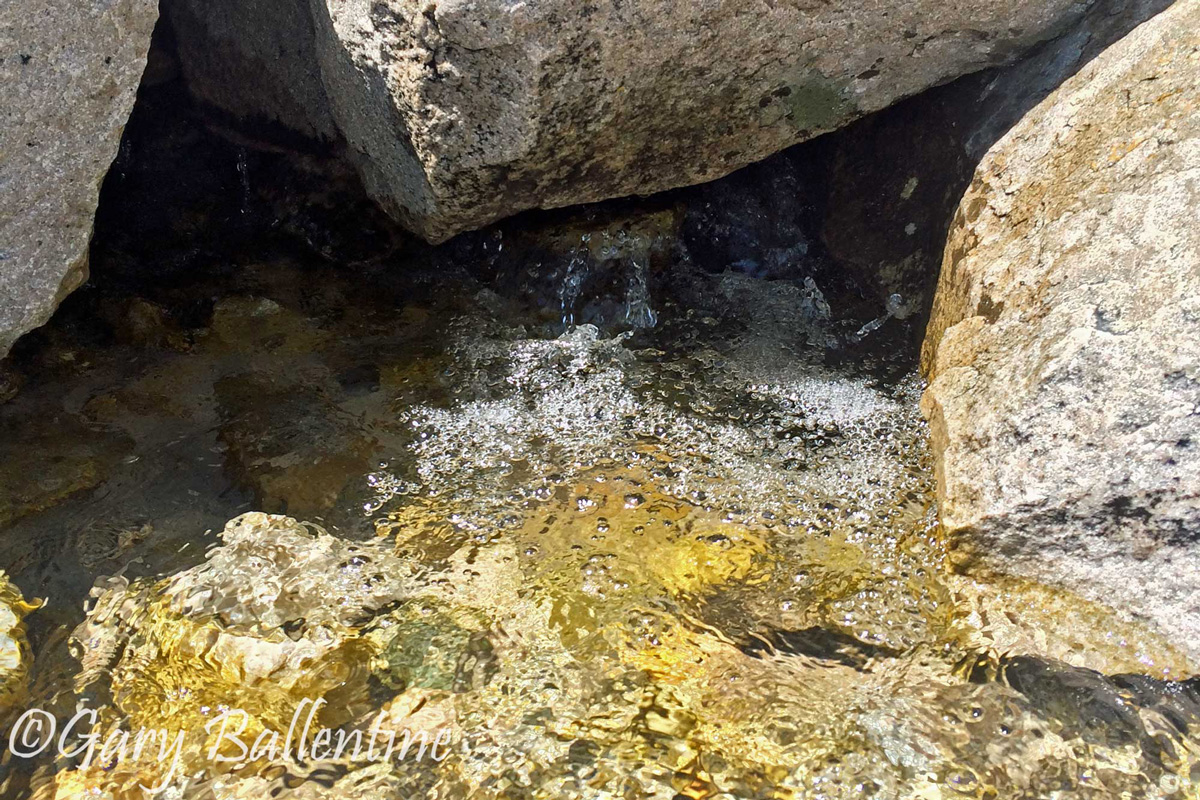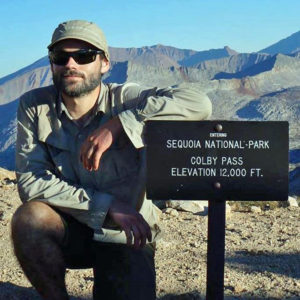Backpacking Water Treatment Guide

Giardia Or Something Else?
Few things will put a damper on your trip faster than Giardia, but odds are it won’t be Giardia or the water that makes you sick. Natural water sources can be contaminated with a variety of harmful bacteria and protozoa including Cryptosporidium, and the most common cause of illness among backpackers is often poor hygiene.
That’s right: your buddy not washing his hands, or maybe another hiker who used your campsite yesterday that didn’t manage his waste properly. Afterall, people and livestock are the primary causes of contaminated water in the wilderness.
What does this mean to the average hiker? Practicing cleanliness is the most important step you can take to prevent the spread of illness on the trail. Follow guidelines about how to properly dispose of waste, use sanitizer on your hands, and don’t do your business anywhere near a campsite or water source. That said, you should still take precautions in case the water is contaminated.
The Need to Treat Water
Most standing, low elevation water sources are breeding grounds for pathogens and should always be treated. Water anywhere can be contaminated, but the higher you go, the cleaner the water usually is. This is because of two reasons: you get closer to the source, eliminating contributors of contamination, and higher elevations experience colder temperatures that do not bode well for many pathogens. Giardia, for example, dies off rapidly when temperatures approach freezing. This means that in order for many high elevation lakes to have hazardous levels of Giardia, it would need to be reintroduced every summer.
As you enter high elevation areas that are protected from grazing and development, opportunities begin to arise for naturally safe drinking water. Springs, snowmelt on rocks, shallow creeks, and even many lakes are often completely Giardia-free and safe to drink from. The sun’s rays even help sterilize them, with many sources indicating that the top 8” of a clear lake will typically be safe to drink on a sunny day.
Determining safe water sources is an acquired skill and always a gamble though, so unless you really know what you’re doing, it’s good practice to always filter your water. In heavily trafficked areas, it’s not uncommon for pristine water sources to become contaminated by careless hikers or pets.

Above: A natural spring bubbling up from the ground in the High Sierra
Filter vs Purify
Filtering removes particles, usually down to around 0.2 microns. This is TINY and will successfully remove nearly all protozoa and bacteria. Don’t worry about the “nearly all” part, as it takes more than a few bacteria or Giardia cysts to actually cause an infection. Think of it this way: drinking water in the USA has allowable limits for Giardia in all public drinking water sources, and these limits exceed what is found in many (but not all) natural water sources. What purifying will not do, however, is remove toxins or viruses from water.
Water purification goes one step beyond filtering and uses chemicals to denature viruses. This is a widely unnecessary step except for very unusual circumstances that will almost never be encountered outside the tropics or disaster zones. Purification methods will not remove toxins though, and this is almost always a bigger risk than viruses. Algae blooms, for example, release toxins that cannot be removed by filtering or common purification methods.
Choose Your Water Sources Wisely
A good rule of thumb is to only filter water that looks like it would be fine to drink without filtering unless you have no other choice. Contamination can occur when dirty water gets on your equipment, and dirty water will quickly clog filters, making them difficult to pump or take a very long time if gravity is doing the work. Always filter the cleanest water available, and if it’s noticeably dirty, us a pre-filter or wrap a sock around the inlet of the pump.
Filter Options
Gravity Filters
Gravity filters are just that, filters that use gravity to force water through the filter. This is the lightest weight option that does not involve chemicals. They take a while to work, sometimes half an hour or more per liter, but most setups can be tied to or placed inside a backpack to filter while you hike. Many designs also allow you to squeeze them, forcing the water through faster. They can also be screwed onto water bottles or attached to bottles via silicone tubes.
These types of filters are commonly used by backpackers with great success, although ‘mini’ versions are known to clog faster and become more of a nuisance than their full-size counterparts. Backflushing with clean water helps clear clogs, but does not always restore the initial flowrate.
The Sawyer Squeeze is a terrific gravity filter and has been proven several times over in the backcountry. Many hikers will use these to refill empty Smart water bottles, saving them even more weight.
Pros
• Cheap
• Lightweight
• Easy to use
Cons
• Takes longer to filter
• Needs to be held upright while filtering, sometimes for extended periods
Pump Filters
Pump filters are heavier and bulkier than gravity filters but work much faster and can be attached directly to a drink tube, allowing you to fill up a hydration bladder like a Camelbak in just a few minutes without removing it from your pack. Not all pump filters are created equal, with the most lightweight designs being less durable. All designs are relatively simple, however, and require very little maintenance. Rinsing the filter when it gets clogged will bring back flow rate and greasing the o-rings every thousand liters or so with the provided silicone grease is all that is needed.
Pros
• Fast and easy to use
• Quickly fill hydration bladders via the drink tube
• Low cost designs available
• Can fill up anything
Cons
• Heaviest and bulkiest option
• Lighter designs are less durable
The Katadyn Hiker Pro is one of the best filters for your money. It’s reliable, durable, and proven.
The MSR Guardian is a more durable design with a ceramic element, but is noticeably heavier. The MSR HyperFlow and TrailShot are lighter but less durable options.
In-Line Filters
These are simple filters placed in the middle of a drink tube on a hydration bladder. They let you fill up your Camelbak with dirty water and filter each sip as you drink from it. The Sawyer and Saywer Mini can be used this way, but tend to add noticeable resistance, especially the mini and especially as it clogs. MSR has a better solution, the Thru-Link Inline Water Filter, that is designed specifically to be an inline filter and flows better.
All inline filters provide some resistance when drinking, must be used with a drink tube, and will result in increased resistance (i.e. harder to suck through) as they get dirty from use. They also add significant bulk to the drink tube, which complicates your pack setup and can kink the hose.
In-line filters can be a great option for speed hikers, adventure racers, and people on short trips. They are less versatile than other designs though and cannot be easily used to fill up bottles or cookware.
Pros
• Small and lightweight
• Filter as you drink
• Works with hydration bladders
Cons
• Only works with hydration bladders
• Makes drinking difficult as the filter gets dirty from use
Filter Elements
Paper/Fiber
Paper and fiber filters are the cheapest and lightest option, but also have a shorter lifespan than ceramic filters. Each manufacturer will provide an estimated life expectancy, and most of them will last for several thousand liters if you are careful with your water source selections. They can be rinsed and lightly brushed to mitigate clogs, but once they reach a certain point, they need to be replaced. With gravity filters, this means buying a new filter, and with pump filters this means buying a new filter element for about half the initial cost of the filter. A distinct advantage of paper filters is that they hold up much better to being frozen than ceramic filters, although freezing is still not recommended.
Ceramic
Ceramic filters are heavier and more breakable than paper filters but last longer. They can be scrubbed aggressively to remove clogs and for most users will last a lifetime. Some can even be scrubbed with steel scouring pads to remove the outer layers of the filter and restore their original flow rate. Ceramic filters are susceptible to cracking if they freeze though, which means it’s very important to sleep with them next to your sleeping bag if you anticipate cold weather (this should be done with all filters).
Filter Tips
All filters eventually clog and all filters require some maintenance (such as rinsing or backflushing), but this is typically minor and infrequent unless you filter dirty water. All filters can also experience problems in freezing temperatures, and it’s important to keep ceramic filters from ever freezing. Frozen paper filters and pumps will need to be thawed prior to use, and most manufacturers still discourage freezing them. Several times I’ve woken up on cold mornings to find my pump wouldn’t work, only to realize it was clogged with ice! Taking it apart and rinsing it in flowing water usually fixes this.
Chemical Treatments
Chemicals are the lightest option for backpacking and have the potential to be the most effective at eliminating pathogens. They do nothing to actually clean the water though, meaning you will be drinking dirt and large particles, and they usually add a flavor that is less than pleasant. Chemical treatments also have the potential to harm your intestinal flora if used for extended periods, which can contribute to sickness on long trips.
Chemicals are great for short trips where weight is of the utmost importance, such as adventure racing, and are a convenient backup method on long trips in case a filter becomes unusable. They are not the best method for most scenarios though, and detract from one of the best parts of backpacking—having an endless supply of the cleanest, most refreshing water you will ever drink.




